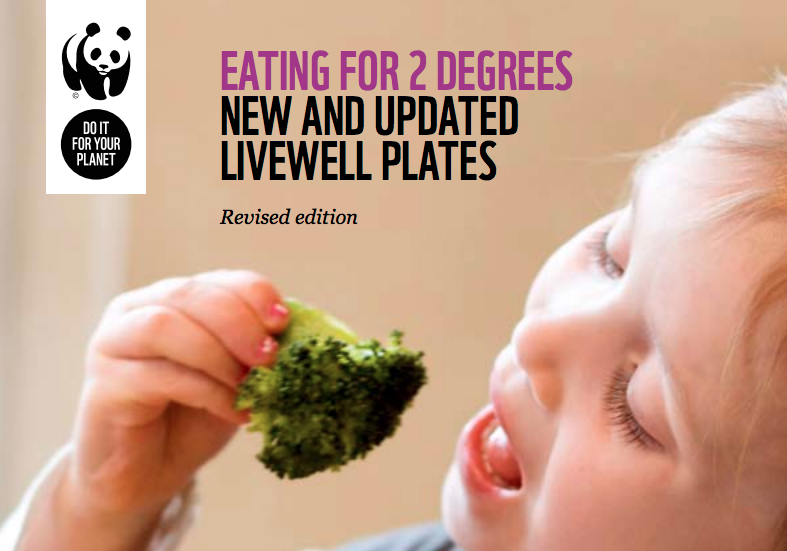
by Tanya HAFFNER | Sep 12, 2018 | Hot Topics in nutrition, The Nation’s Health, Education, Changing mindset
The government recently announced new measures to halve rates of childhood obesity by 2030 and significantly reduce the health inequalities that persist – closing the gap in obesity rates between children from the most and least deprived areas.
This proposal builds upon the first chapter of the Childhood Obesity Plan, which was widely criticised at the time as lacking the breadth and depth of initiatives needed to effectively tackle such a widespread and entrenched issue.
Steve Brine, Public Health Minister has stated: “One in three children are now overweight or obese by the time they leave primary school. Overconsumption, combined with reduced activity, is having a catastrophic effect on our children’s health. As both a parent and minister, I am committed to driving today’s pledge of halving obesity over the next 12 years with bold new action.”
“Our updated plan will put parents in charge, providing more information and support. Our aim is to help families make healthier choices, which will in turn provide a better chance at a longer, healthier life for our children.”
Obesity – A systems issue
The financial burden of obesity is too great to ignore: it’s estimated that the NHS in England spent £6.1 billion on overweight and obesity-related ill-health in 2017/18, which, to put into context is more than was spent on the police, fire service and judicial system combined. The wider costs to society of these conditions are around £27 billion a year, if not higher.
Ever since the Foresight report was published over a decade ago, it has been recognised that obesity is a systems issue and one that therefore requires reform at many points, to deliver change. This idea and the fact that no plan to date has sought to address childhood obesity in a multi-sector way, was reiterated in the recent inquiry by the parliamentary Health and Social Care Committee into childhood obesity. Childhood Obesity: Time for Action argued for a change in narrative, making clear that obesity is everyone’s business and “an effective childhood obesity plan demands a holistic, joined-up, ‘whole systems’ approach with clear and effective leadership”.
How does the Childhood Obesity Strategy measure up?
This update to the Childhood Obesity Strategy is a welcome step forward. It contains a raft of proposed measures that seek to tackle the issue using a co-ordinated range of policy levers. What is also good to see is that this new plan takes a firm but fair approach in how it will deliver change: using voluntary measures in the first instance but being clear that a harder tact with the likes of regulatory and fiscal measures will be considered where progress is deemed insufficient, or where a level playing field is required.
Here at Nutrilicious, we’ve taken a closer look at what’s in store and benchmarked the new childhood obesity plan against the World Cancer Research Fund’s NOURISHING framework, as well as the recommendations from the Health and Social Care Committee’s report mentioned earlier.
The NOURISHING framework
The NOURISHING Framework sets out that policies are needed within three core areas to improve diets: the food environment, food system and behaviour change communication.
N – Nutrition label standards and regulations on the use of claims and implied claims on food
O – Offer healthy food and set standards in public institutions and other specific settings
U – Use economic tools to address food affordability and purchase incentives
R – Restrict food advertising and other forms of commercial promotion
I – Improve nutritional quality of the whole food supply
S – Set incentives and rules to create a healthy retail and food service environment
H – Harness food supply chain and actions across sectors to ensure coherence with health
I – Inform people about food and nutrition through public awareness
N – Nutrition advice and counselling in health care settings
G – Give nutrition education and skills
Bearing in mind that some policies and actions targeting childhood obesity were in place prior to this strategy update, overlaying the new measures show how broad their impact alone intends to be:
| New measures |
N |
O |
U |
R |
I |
S |
H |
I |
N |
G |
Nutrilicious notes |
| Improved food labelling to display ‘world-leading, simple nutritional information’ as well as information on origin and welfare standards following Brexit |
X |
|
|
|
|
|
|
|
|
|
|
| Strengthen School Food Standards to reduce sugar consumption |
|
X |
|
|
|
|
X |
|
|
|
We would like to see these universally applied and close the loophole that exists for some academies |
| Strengthen Government Buying Standards for Food and Catering Services* |
|
X |
|
|
|
|
X |
|
|
|
|
| Ban price promotions such as buy one get one free, multibuys or unlimited refills of unhealthy foods and drinks in the retail and out of home sector* |
|
|
|
|
|
X |
|
|
|
|
It is good to see a mandatory approach applied here, as this is what is undoubtedly needed when policies will impact businesses’ bottom line. |
| Ban the sale of energy drinks to children* |
|
|
|
|
|
X |
|
|
|
|
|
| Ban promotion of unhealthy food and drink by location e.g. positioning – checkouts, end of aisles and store entrances, in retail and out of home sector* |
|
|
|
|
|
X |
|
|
|
|
|
| Introduce a 9pm watershed on unhealthy food and drink advertising and similar protection online* |
|
|
|
X |
|
|
|
|
|
|
We would like to see similar controls applied to sports advertising |
| Review governance arrangements for advertising rules (currently overseen by the Committee of Advertising Practice and Advertising Standards Authority) |
|
|
|
X |
|
|
|
|
|
|
|
| Potentially bring ‘sugary milk drinks’ into the soft drinks levy if insufficient action on sugar reduction takes place |
|
|
X |
|
X |
|
|
|
|
|
|
| Introduce mandatory calorie labelling for out of home sector in England* |
X |
|
|
|
|
X |
|
|
|
|
|
| Sugar reduction plan for products aimed exclusively at babies and young children due in 2019* |
|
|
|
|
X |
|
|
|
|
|
|
| Calorie reduction plan due mid-2019* |
|
|
|
|
X |
|
|
|
|
|
|
| Develop trailblazer programme with local authority partners to highlight what can be done within existing powers |
|
|
|
|
|
X |
|
|
|
|
We would like to see greater powers for local authorities and health services |
| Develop plan to use Healthy Start vouchers to provide additional support to children from lower income families* |
|
|
X |
|
|
|
|
|
|
|
|
| Ofsted will review school curriculum to understand how it can better support healthy behaviours, including food choices |
|
|
|
|
|
|
X |
|
|
X |
We would like to see improved early years education for parents to support a healthy first 1000 days and compulsory home economics with healthy cooking skills at the core in both primary and secondary schools |
*Proposal for further consultation
Is it enough?
While we applaud this latest round of the childhood obesity plan, we would also draw attention to the fact that there is still some way to go.
By mapping the proposed policy options against the NOURISHING framework, we can see that in this latest iteration of the plan much more focus has been given to shaping an environment that enables and supports healthier choices, which is great to see.
However, what is noticeably absent is the ‘I’ in terms of improving food and health literacy of the population. In a ‘post truth’ world where consumers are increasingly sceptical of messages coming from the scientific community, and when social media influencers are capturing the hearts and minds of the masses with questionable dietary advice, never has it been more important to provide clear, simple and authoritative information and advice. As such, we’d like to the see the government step-up their efforts on social marketing and educational campaigns.
What is more, a number of recommendations made in the Health and Social Care Committee are notably absent, including:
- Establishing a Cabinet-level committee to review the implementation of the plan, ensuring it gets the high-level traction it requires
- Proposing further measures around early years and the first 1,000 days of life, including targets to improve rates of breastfeeding
- Banning the advertising and promotion of follow-on formula milk
- Providing local authorities with further powers to limit unhealthy food and drink advertising near schools (the only powers available to local authorities extend to the positioning of the billboards themselves, not the content of the advertising)
- Introducing services for children living with obesity
Finally, while this plan is overtly focussed on limiting unhealthy foods and drinks and making processed, packaged foods a little better through reformulation (lower in salt etc), we would also like to see equal attention given to measures that work improve the quantity and quality of foods that we do want people to eat more of. Changing the dietary landscape will require strong efforts to provide families with the tools and knowledge to instil these healthier behaviours in a sustainable way.
The full plan for action can be viewed here:
https://www.gov.uk/government/publications/childhood-obesity-a-plan-for-action

by Tanya HAFFNER | Dec 15, 2017 | Surveys and insights, Changing mindset, Impactful health initiatives, Resources worth having
Currently 2.3 million people in the UK are living with heart disease, at an annual cost of £953m to the NHS. We’re involved in an on-going battle to try to reduce it.
For those in the health industry, the link between high cholesterol and heart disease is well known. Meta-analyses, genetic studies and randomised controlled trials totalling more than 2 million participants, 20 million person-years of follow up and 150,000 cardiovascular events demonstrate a close correlation between cardiovascular disease (CVD) and high levels of low-density lipoprotein cholesterol (LDL-C).
What’s less known is the impact plant stanol esters can have on lowering cholesterol.
Changing behaviours of those at risk of heart disease
GPs and practice nurses are key influencers when it comes to persuading people to change their lifestyle to improve their health. So it’s vital to make sure these healthcare professionals (HCPs) have the facts – and materials – they need to support this.
In a survey we undertook this year of HCPs on behalf of Benecol, we found that persuading patients to improve their diet change is a key priority when it comes to reducing cholesterol – along with cutting smoking and increasing physical exercise.
We discovered that while the HCPs are well aware of the importance of cutting saturated fat and sugar, and want to communicate about healthier eating to patients, they are less likely to know the impact plant stanol esters can have on lowering cholesterol.
Plant stanols and sterols can reduce cholesterol by up to 10% in two to three weeks.
Over 70 clinical studies have demonstrated that plant stanols effectively lower cholesterol.
How do they work?
Consumption of foods with added plant stanols or sterols (1.5 – 2.4g/day) should take place at meal times. Mixing with food and digestive juices results in the displacement of dietary and biliary cholesterol in the fat absorption pathways in the gut.

Cholesterol absorption is reduced by about 50% and studies have shown a dose-dependent reduction in circulating LDL-C of 7 – 10% on average.
Cholesterol begins to lower immediately. With continued use full reduction is achieved within 2 – 3 weeks and is sustained over the longer term. What’s more, if used alongside statin therapy, plant stanols lower LDL-C by an additional 10% – an effect greater than doubling the statin dose, which, at best, only provides a 6% additional LDL-C reduction.
Plant stanols provide an easy diet-based solution to all hypercholesterolaemic patients, including those with mildly elevated serum cholesterol level. They would also be especially recommended for those averse to taking statins, anxious to keep statin doses low, or at higher risk from potential statin-related side effects.
They are recommended by a number of prevention and treatment guidelines as part of a cholesterol-lowering diet, including the European Society of Cardiology, the Atherosclerosis Society, UK JBS3 guidelines and the World Health Organisation.
Our holistic communications approach to help reduce cholesterol
As a result of our research, we created a holistic communications approach in association with HEART UK – the Cholesterol Charity and leading heart health dietary specialists – to support practice nurses and GPs, and their patients.
- We created information sheets for the healthcare professionals with full information about dietary changes patients can make to lower LDL-C levels. Included in this was the latest evidence not only on plant stanols but on all dietary recommendations for lowering LDL-C.
- Alongside this were fact sheets for patients, clearly explaining the problem of high cholesterol and the lifestyle changes that would have a significant impact on their health.
We highlighted the key motivators for patients – the fact that a small change would bring quick results.
Companies are accused of only being interested in their profits – and of course, they are ultimately accountable to stakeholders, so money is always going to come into it.
But what we found with Benecol’s approach is that they are genuinely determined to help combat the huge problem of heart disease that exists. Reaching out to health professionals they wanted to understand issues fully and how best to communicate lifestyle change – not just dietary, which would help promote the message of plant stanols, but also more widely, include all dietary matters as well as smoking and exercise.
The materials tell the whole story, educating the professionals and patients and then leaving it in their hands how to act.
Health professionals responsible for communicating heart health cholesterol lowering advice can order these packs by calling the Benecol Helpline 0800 018 4010 and asking for your health professional Benecol Toolkit ‘Small Change, Big Results’ pack.

by Tanya HAFFNER | Dec 1, 2017 | Changing mindset, Impactful health initiatives
A new World Wildlife Research Fund (WWF) report, Eating for 2 Degrees – New and Updated Livewell Plates, calls on the UK Government and Climate Change Committee to set goals for reducing emissions from the food sector. Following-up from the original 2011 WWF Livewell report, it aims to ‘provide diets that are good for both people and the planet.’
There are new plates developed specifically for adolescents (10–17 years old), adults (18–64), the elderly (65–85) and vegans. They illustrate the absolute minimal dietary changes needed by 2030 to keep below a two-degree rise in global temperature, as per the 2015 Paris Climate Change Agreement. The new Livewell Plates are described as,”representative diets that meet national nutritional requirements while reducing the environmental footprint of the food system that produces them.”
The Plates were based on modelling from Public Health England’s Eatwell Guide and current dietary intakes as baselines. They aim to create a diet with the fewest possible changes to current recommendations while meeting the restrictions imposed. In general, they contain more plant foods, particularly those that are nutrient dense such as vegetables, wholegrain cereals products, nuts, legumes and vegetable oils.
This report builds on thinking on healthy sustainable diets that we are increasingly seeing from consumer and public health organisations and think tanks. And the WWF believe it’s time that the UK Government implements healthy eating advice that also integrates sustainability.
The authors hope to develop additional Plates in future, including one for infants and primary school children, as well as country-specific Plates.
What are the Livewell Principles?
People are advised to follow the following Livewell Principles:
- Eat more plants – enjoy vegetables and whole grains
- Eat a variety of foods – have a colourful plate
- Waste less food – one third of food produced for human consumption is lost or wasted
- Moderate your meat consumption, both red and white – enjoy other sources of protein such as peas, beans and nuts
- Buy food that meets a credible certified standard – consider MSC, free-range and fair trade
- Eat fewer foods high in fat, salt and sugar – keep foods such as cakes, sweets and chocolate as well as cured meat, fries and crisps to an occasional treat. Choose water, avoid sugary drinks and remember that juices only account for one of your 5-a-day however much you drink.
Changes we think should be implemented in light of the report
- Food businesses including manufacturers and caterers should be looking at ways of including more plant foods in general into their products and menus, and using credible certified standards where these are available.
- Food service in particular can look at ways of promoting their expanding range of plant-based options. A new scheme from Veganuary, The Humane League UK and Vegan Chef Day gives a good example of raising awareness.
- Retailers should be looking at ways of shifting their promotional budgets away from high fat, salt, sugar foods and towards the core foods in the Eatwell Guide and Livewell Plates.
- We are already seeing a shift in reported consumption of animal products by consumers. A recent report from Mintel suggesting 28% of Brits have reduced or limited their meat consumption in the last six months. Consumers can further support their efforts towards more sustainable diets by thinking more holistically – eating more plants, wasting less, and so on.

by Nutrilicious | Nov 9, 2015 | Changing mindset
Mindfulness is often used to promote well being and help reduce stress and anxiety and considerable benefits have been shown from a large body of research in positive psychology. In essence mindfulness practice teaches us to pay full attention in the present moment, non judgementally to our physical and emotional experiences. 1
Several studies have looked at the potential benefits of applying these techniques to eating. Researchers point out that of the multiple daily decisions we make about food, most are unconscious often resulting in overeating and other unhealthy eating patterns. Mindful eating aims to raise our awareness of the internal and external environments before, during and after eating and the reasons behind some of our decisions we make with the aim of improving diet. As shown in Figure 1 mindful eating may explore the “why, what, when and where” of our food consumption as well as the “how”( including speed of eating) and “how much” (portion size).
Figure 1 The Mindful Eating Cycle

Mindful eating aims to promote awareness not only of the nutritional content of our food but other qualities such as the appearance, smell, taste and texture. It may focus attention on the environmental triggers to overeating, the thoughts and feelings that arise when we eat, how we deal with guilt or anxiety around food and the role of unhelpful distractions like TV or social media in causing overeating.
Several studies show that speed of eating is associated with higher energy intakes and greater risk of obesity. 2-3 In addition eating as a genuine response to hunger and satiety signals (intuitive eating) is strongly associated with a lower body mass index 4. Mindfully slowing eating and allowing a delay for satiety to register, may therefore be an effective strategy to help prevent or manage obesity.
Mindless consumption of large portion sizes of food and drink are also strongly linked with higher energy consumption and risk of obesity. 5 Some studies show those who score highest on measures of mindful eating, in particular those who pay attention to their emotions and feelings around eating, eat smaller portions of energy dense foods. 6 Even brief teaching of mindful eating techniques have been shown to reduce overeating on unhealthy snacks (such as chocolate chip cookies in one study) when we are particularly hungry. 7
In a recent review of 61 studies, researchers consistently found the larger the amount of food we serve ourselves the more is eaten . 8 Mindfully reducing triggers to overeating such as large portions and tableware sizes, repackaging or purchasing single portion package sizes and placing unhealthy foods or leftovers out of sight may be effective behaviour tools to moderate the types or quantities of food consumed.
Mindful eating strategies can help promote evidence based behaviour change commonly advised for improving health as recommended in public health interventions.
For example some of the effective eating behaviour strategies to help weight loss which may be promoted by mindful eating techniques are shown in shown in Table 1.
Table 1 Some evidence based eating behaviour strategies advised to help weight loss which can be promoted by mindful eating techniques
 Adapted in part from NDR- UK 9402 Changing For Good 11
Adapted in part from NDR- UK 9402 Changing For Good 11
In addition to a role in weight management, mindful eating has been shown to help people improve diet in a wide range of conditions including eating disorders, metabolic syndrome and diabetes. 9-10 Regular practice may also increase awareness of the positive and nurturing opportunities of food preparation and consumption.
To be successful mindful eating needs to learnt and developed by regular and confident practice. For instance studies show that people who make permanent changes to eating patterns are more likely to lose weight and keep it off.
At present there are few large, randomised studies on mindful eating and further research would be useful. However, mindfulness techniques which can be taught may be a useful and effective addition to the toolbox for improving informed, conscious choices around eating which could include any food behaviour change strategy or related communication programme.
References
1. Ludwig DS and Kabat-Zinn J (2008) Mindfulness in medicine. JAMA. 300 : 1350-2
http://www.ncbi.nlm.nih.gov/pubmed/18799450 (Accessed November 2015).
2. Leong SL ,Madden C, Gray A et al ( 2011) Faster self reported speed of eating is related to higher body mass index in a nationwide survey of middle –aged women. J Am Diet Assoc 111: 1192-7
http://www.ncbi.nlm.nih.gov/pubmed/21802566 (Accessed November 2015).
3. Otsuka R, Tamakoshi, K Yatsuya H et al (2006) Eating fast leads to obesity: findings based on self-administered questionnaires among middle-aged Japanese men and women.
http://www.ncbi.nlm.nih.gov/pubmed/16710080 (Accessed November 2015).
4. Madden CE, Leong SL, Gray A et al ( 2012) Eating in response to hunger and satiety signals is reacted to BMI in a nationwide sample of 1601 mid – age New Zealand women. Public Health Nutr 15 : 2272-9 http://www.ncbi.nlm.nih.gov/pubmed/22443858 (Accessed November 2015)
5. Wansink B (2011) B Mindless Eating : why we eat more than we think. Hay House UK. http://mindlesseating.org/ (Accessed November 2015).
6. Beshara M, Hutchinson AD and Wilson C ( 2013) Does mindfulness matter? Everyday mindfulness, mindful eating and self-reported serving size of energy dense foods among a sample of South Australian adults. Appetite 67: 25-9
http://www.ncbi.nlm.nih.gov/pubmed/23548262 (Accessed November 2015).
7. Marchiori D and Papies EF ( 2014) A brief mindfulness intervention reduces unhealthy eating when hungry, but not the portion size effect. Appetite 75: 40-5
http://www.ncbi.nlm.nih.gov/pubmed/24361312 (Accessed November 2015).
8. Hollands GJ, Shermilt, I Marteau TM et al (2015) Portion, package or tableware size for changing selection and consumption of food, alcohol and tobacco. Cochrane Library September 2015.
http://onlinelibrary.wiley.com/doi/10.1002/14651858.CD011045.pub2/abstract.
(Accessed November 2015).
9. Kristeller JL, Wolever RQ (2011) Mindfulness-based eating awareness training for treating binge eating disorder: the conceptual foundation. Eating Disorders 19:49-61.
10. Miller CK, Kristeller JL, Headings A et al.(2012) Comparative effectiveness of a mindful eating intervention to a diabetes self-management intervention among adults with type 2 diabetes: a pilot study. J Acad Nutr Diet. 112:1835-1842.
11. Changing for good NDR- UK Ref 9402
http://www.ndr-uk.org/vmchk/Weight-management/Changing-for-Good.html (Accessed November 2015).







 Adapted in part from NDR- UK 9402 Changing For Good 11
Adapted in part from NDR- UK 9402 Changing For Good 11